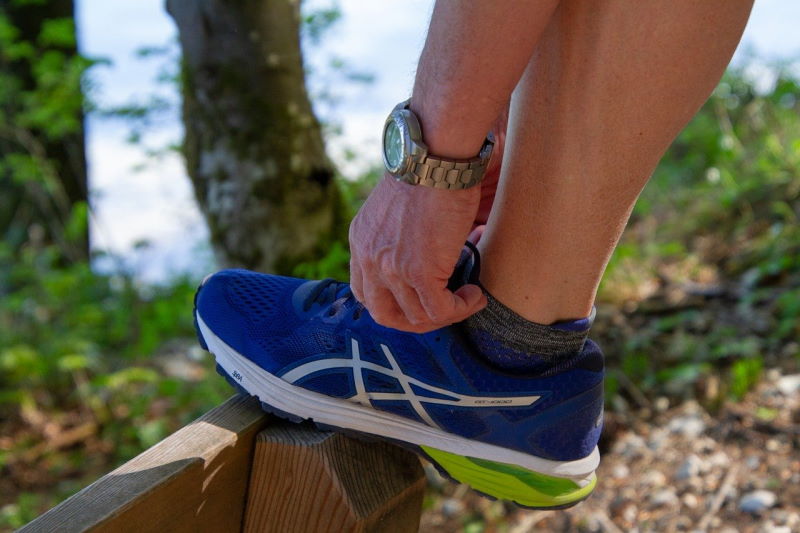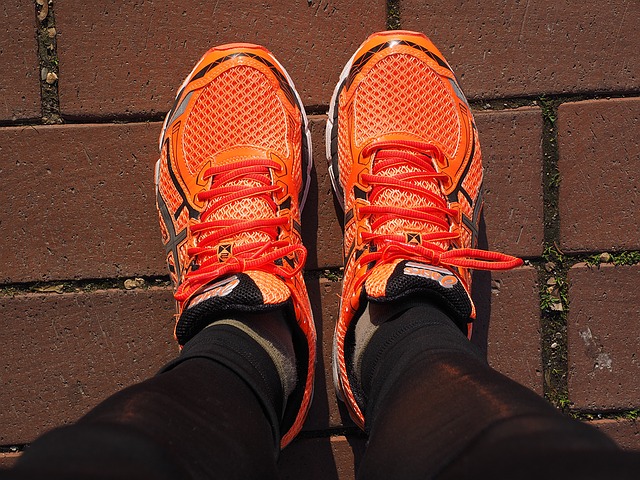Whether you are a short distance runner, a trail runner or a marathoner, you will need proper running shoes. Wearing the right pair of running shoes will provide you comfort and support with every step while ensuring optimum performance. On the other hand, running with the wrong shoes might lead to severe injuries on your feet. And you might end up being sidelined by those injuries for long periods. Here are some of the common mistakes that people make when buying shoes and how to avoid them:

Fitting Shoes without Socks
If you are buying your running shoes from a physical store, then you should carry your socks. There are two main reasons why you should try on new running shoes with socks. First, socks will prevent the transfer of sweat from the foot to the shoe and vice versa. Second, your running socks will help you to choose the right size. After all, you will be wearing these shoes with socks. The type of socks you will carry will depend on how you intend to be using these shoes. If you will be using your running shoes as casual daily footwear, then you can just carry your dress socks. On the other hand, if you will be using the shoes for actual running or jogging, then you should carry a pair of running socks.
Relying on the Sizes Printed on the Label
When buying running shoes for the first time, most people rely on the sizes printed on the shoebox or the label. Unfortunately, you might end up buying ill-fitting shoes. Instead of relying on the sizes printed on the label, you should instead open the box and try on the shoes. Printing errors can sometimes happen, leading to wrong shoe labeling. For instance, the label can be showing size 8 while the shoes are size 10. If you wear size 8 shoes, then size 10 will definitely be too large for you. And this means that you will have to return those shoes. By the time you go back, your preferred design might have already sold out. On the other hand, if you had just spent a few minutes trying on the shoes, you will have walked out of the store with the right pair of shoes.
Buying the Wrong Size
One of the biggest mistakes that you can make when buying running shoes, is choosing the wrong size. This mistake usually occurs when you buy shoes without having your feet measured first. Some people assume that just because they have been wearing a certain shoe size, then that will always be the case. If you wear a size 8 Adidas running sneakers doesn’t mean that size 8 Nike sneakers will fit you well. Also, you should not assume that your feet size will always remain the same. Every time you go to the store to buy running shoes, make sure that your feet are measured first. Most outlets have specialized tools such as the Brannock device, which provides accurate feet measurements.
If you are buying your running sneakers online, then you don’t have the luxury of fitting shoes first, which means you will have to wait until your order arrives. However, most online shoe sellers provide a sizing guide, which you can use to determine the right size. You can also visit a store near you and then try on similar shoes. Once you’ve settled on a certain size, you can then place your order from the online store. Also, most online sellers will allow you to return the shoes for a refund or a replacement if they don’t fit you.
Shopping in the Morning
Some people love shopping in the morning and it’s understandable. There are few shoppers during this time of the day, and the queues will move faster compared to shopping in the evening or afternoons. But when it comes to buying running shoes or just any other type of footwear, it’s not advisable to do it in the morning. Your feet will start swelling from the time you wake up to around 4 pm in the evening. Assuming your feet measure size 6 in the morning, it will have expanded by at least half a size throughout the day, which means you will be size 6.5 in the evening. Therefore, if you had purchased a size 6 in the morning, the shoes will feel tight and uncomfortable in the evening. If you want to buy the correct size, you should visit the stores in the evening. And if you must buy them in the morning, then you should get one that is at least half a size bigger than what you normally wear.
Sacrificing Comfort for Style
When it’s time to buy shoes, you should always prioritize comfort and proper support, over anything else. It doesn’t matter whether a certain design of running shoes matches with your training gear or they look stylish. If they are not comfortable, then you will be wasting your money buying those shoes. Running shoes don’t have to be attractive or stylish, but they must be comfortable. Make sure you pay attention to their cushioning standards, their construction quality, and most importantly, their comfort levels. It doesn’t matter whether a certain pair of running shoes make your feet look large or you don’t like their color. If they are well made and they will get the job done, then you don’t have to worry about anything else.
Failing to Match Shoes with the Activity
This is another common mistake made when buying shoes, especially beginners and intermediate runners. Running shoes fall under five main categories – lightweight shoes, trail shoes, motion control shoes, stability shoes, and cushioned shoes.
- Lightweight shoes: These are designed for speed workouts such as intervals and sprints. They come with less cushioning under the foot, thus allowing for more dynamic and natural movement of the foot. Since they lack shock-absorption capabilities, they should only be used for light training.
- Trail running shoes: These shoes are designed for running on surfaces that are filled with mud, rocks, dirt, grass and other similar conditions. Therefore, they should offer ample protection, stability, and support. Trail running shoes are a blend of hiking shoes and running sneakers. Apart from their superior protection, trail running shoes also provide excellent grip.
- Stability shoes: These shoes are mainly recommended for people with a normal arch. Runners with neutral feet require shoes that offer a good blend of support and midsole cushioning. Stability shoes often come with a firm medial post, which helps to support the arch.
- Motion-control shoes: Motion-control shoes are designed for people with low arches or those with serious over-pronation. These shoes tend to be more rigid than an ordinary pair of running sneakers.
Your running shoes should align with the running you are doing. Using a single pair of shoes for the different running activities might lead to foot injuries. Furthermore, if a pair of shoes is designed for running on the treadmill, using it for trail running will lead to premature wear and tear. Therefore, when you use the right pair of running shoes for the right activity, you will not only be preventing injuries but you will also be extending the life of your running shoes.
Ignoring Your Foot’s Biomechanics
As much as most running shoes look almost the same, it doesn’t mean that you can choose any that you come across. Different running shoes are designed for different foot biomechanics. It’s, therefore, important to understand your foot, before you purchase any pair of running shoes. For instance, some running shoes are designed for overpronators while others are engineered for under pronators. Others are designed for runners with high arches while some are specifically built for people with neutral pronation. Therefore, you need to buy a pair of shoes that is specifically designed for your foot shape, running gait, wear pattern and running style. Some running shoes will accommodate people with narrower feet better than those with wider feet. The right pair of running shoes will help to absorb impact, correct pronation issues, and alleviate pressure on the knees and ankles. On the other hand, if you buy shoes that are not designed for your individual biomechanics, you will end up with pain on your feet. You might even end up with leg and foot injuries. Some stores have specialists that will check your feet, analyze your gait pattern and then recommend the best pair of running shoes for your needs.
Ignoring Consumer Reviews
Most online shops like Amazon, have a section where buyers can leave a review after purchasing a product from them. Therefore, if you intend to buy your running shoes from an online shop, then it’s important to pay attention to the consumer reviews since you will not have the opportunity to assess the shoes physically. Those reviews will help you to determine whether you should buy that pair of shoes. Some will tell you that the reviews are biased and you should not pay attention to them. While that might sometimes be the case, reviews will give you a picture of how those running shoes perform when they have been put to the test. Most buyers will comment about the sizing, comfort, durability, and other important features. Make sure you pay attention both to the negative and positive reviews.
Closing Remarks
Getting the right pair of running shoes is important for all runners. Running with the wrong running shoes can lead to joint pain, sore feet, blisters, and swelling, as well as serious foot conditions like plantar fasciitis and bunions. When buying running shoes, you should always prioritize protection, support and most importantly, comfort. And you can easily find a pair that offers all these qualities, by avoiding the mistakes listed above.




0 comments